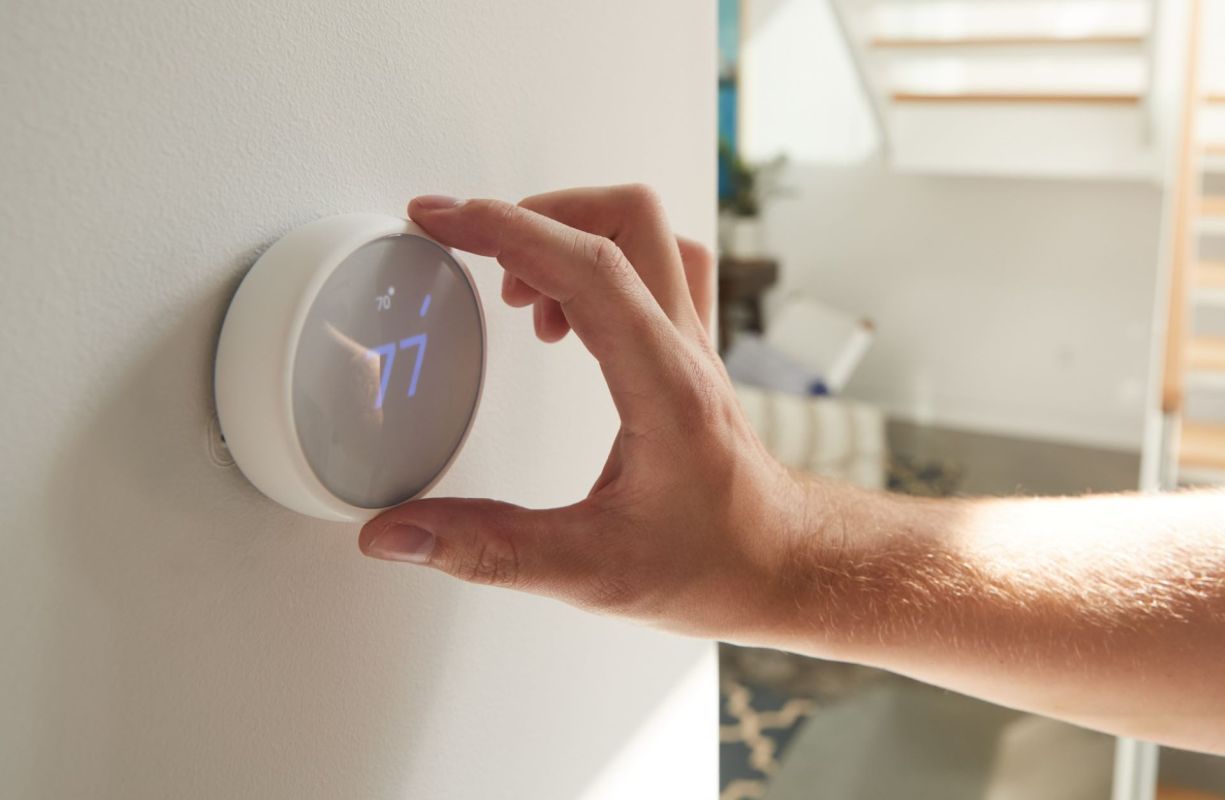In recent years, energy bills have soared across the U.S. Even in the midst of horrible inflation, power costs have risen at double the rate of other goods.
One reason? The cost of fuels like dirty methane gas is continuing to skyrocket, thanks in part to the ongoing war in Ukraine.
And while clean, abundant energies like wind and solar are becoming cheaper each year, not everyone can take advantage of them.
Thankfully, there are plenty of actions you can take to lower your home's energy bills — without breaking the bank or launching into a remodeling project. Here are eight of the easiest and most cost-effective ways to slash your monthly power bills.
Level 1: Quick and easy steps
Swap out old incandescent lightbulbs for LEDs
If you use incandescent bulbs in your home, you have the opportunity to seriously lower your energy bills with a quick swap.
But because LED bulbs use 75% less energy — despite shining brighter — you could save $600 a year. This means after 10 years, you'd be up a whopping $5,800 (after the initial cost of bulbs) and would have produced thousands of pounds less pollution. It's no wonder the government has effectively outlawed incandescent bulbs for not meeting efficiency standards.
Unplug those 'energy vampires'
Energy vampires are your appliances, like coffee makers or TVs, that use energy even when they're not on — just by being plugged in. In addition to increasing the risk of house fires, these energy-sucking vampires can account for up to 20% of your monthly energy costs, according to the power company Duke Energy.
By unplugging those suckers when you're not using them, you can save well over $100 a year while keeping hundreds of pounds of planet-warming pollution out of our air.
Level 2: Home temperature control
Make your house a smart home
Right now, we waste a ton of energy heating and lighting our homes, even when we're away. Luckily, a smart home — which is really just a term for a house with remote-controlled or automated appliances — makes changing your temperature and lighting easier and cheaper.
If you install a smart thermostat that reduces energy use when you're out of the house, you could save at least $50 a year. And they don't have to be expensive — this ENERGY STAR-certified smart thermostat only costs $80, meaning it would more than pay for itself after two years.
One benefit of making your home's lighting smart is that you can turn your lights on or off from anywhere — even from bed. What's more, an estimate by solar energy company Palmetto puts annual savings from smart lighting at $240 a year.
Weatherize your house
Weatherization refers to having your home properly insulated, sealed, and protected from the elements. Keeping your home better protected against the elements also leads to spending less on electricity (hundreds of dollars less, in fact), while creating less pollution.
Weatherizing can be pricy, however, costing $4,700, on average. But through the Inflation Reduction Act (IRA), you can get up to $1,600 in rebates to cover weatherization costs.
Additionally, there are $1,200 in tax credits available for sealing, insulation, and energy audits.
Together, you could get up to $2,800 back, cutting that $4,700 down to $1,900, meaning that, by also reducing your annual energy costs, you'd be saving money within seven years.
Install a heat pump
Heat pumps are the dual-threat heating and cooling appliances of the future.
Because they're between three and five times more efficient than traditional cooling and heating systems, you could expect to save nearly $850 a year in energy costs if you're upgrading from a propane furnace.
Rewiring America estimates that for a 2,000-square-foot house, a heat pump could cost about $14,000. But between IRA rebates and tax credits, you could get up to $10,000 back, meaning it could pay for itself within five years.
Level 3: Energy-efficient appliances
Get an eco-friendly washer and dryer
If you're due to get a new washer and dryer, energy-efficient models are a no-brainer choice. Because these eco-friendly appliances are cost-comparable with traditional, less-efficient ones, you'll enjoy pure savings when you upgrade.
You can save 25% on energy costs with ENERGY STAR-certified washers, and 20% on dryers. Plus, through the IRA, you can get up to an $840 rebate for installing some eco-friendly clothes dryers.
Install a heat pump water heater
Heat pump technology can be used for water heaters, too. And because they're so much more efficient, homeowners who make the switch can expect to save about $330 annually on their energy bills.
Additionally, these water heaters last way longer than traditional electric and gas water ones, representing even bigger savings.
Still, since they're the superior technology, heat pump water heaters can cost an average of $1,500 more than traditional water heaters, according to Forbes. But tax credits and rebates make upgrading the clear economical choice, providing up to a $1,750 upfront discount and a 30% off tax credit.
Money aside, you can seriously reduce the pollution your home creates by making this upgrade, taking 20,000 pounds of pollution out of the air over 10 years.
Install a tankless water heater
If heat pump water heaters aren't for you — or, if you're worried they'll take up too much space — you could also opt for a tankless water heater.
These water heaters can be up to about 33% more energy-efficient than conventional ones, and you'd still save over $100 a year on energy costs. The price of these high-efficiency, low-operating-cost units varies widely, with estimates from Forbes ranging from $500 to $2,300.
But there's also a tax credit of up to $600 for people who make the upgrade to a tankless water heater, so the switch doesn't have to be an expensive one at all.
Join our free newsletter for easy tips to save more, waste less, and help yourself while helping the planet.








